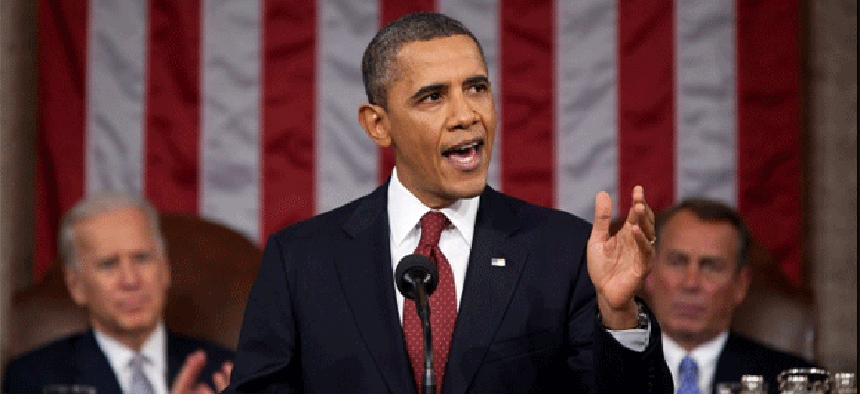The state of the union for 3D printing is strong


Connecting state and local government leaders
If there were any doubts about the potential for this quirky, fascinating technology, its place in the president's State of the Union speech should erase them.
Like many other good citizens, I tuned in to President Obama’s State of the Union speech the other night. I expected to be brought up to speed on matters of state, such as the troops fighting overseas, the economy and other matters of personal importance to me, like climate change. But I never thought I would hear the president talk about 3D printing.
The sometimes quirky realm of 3D printing has been growing in popularity lately. The military is using it in Afghanistan to print out tools as needed. And a couple months ago I questioned whether or not 3D printers would need to be regulated, since users had figured out a way to print working firearms.
If you’re new to this technology, 3D printers work by loading a digital model, basically a computer-aided design (CAD) file, and then adding layer upon layer of material until the actual physical object inside the unit matches the design. It can take a few minutes or a few days to print something out, depending on the printer and the size and complexity of the design. Right now, most of what is created is made of a type of plastic, although some printers can use metals to create more solid objects. It depends on the substrate used.
The administration has designated $60 million of its $1 billion National Network for Manufacturing Innovation, for 3D printing pilots, but it still came as a surprise. Talking about ways to jumpstart the economy, the president described one Ohio town where an empty factory is now the workplace of people who are mastering 3D printing.
“There are things we can do, right now, to accelerate this trend,” Obama said. “Last year, we created our first manufacturing innovation institute in Youngstown, Ohio. A once-shuttered warehouse is now a state-of-the art lab where new workers are mastering the 3D printing that has the potential to revolutionize the way we make almost everything. There’s no reason this can’t happen in other towns.”
He then asked Congress to help him create 15 more hubs of innovation across the country, which would presumably work on projects other than just 3D printing.
If anyone had any lingering doubts about the maturity and the seriousness of 3D printing technology, the speech should have erased it. Sure, we’ll still print out plastic dolls, bobble-heads and various bric-a-brac, but probably also gears, tools and more useful stuff, too. The technology is being applied to everything from flexible electronics to boats and even, down the road, aircraft.
It really comes down to mastery of the design process. Become the best in the world at creating the CAD models that drive the 3D printers, and the United States could become the new worldwide hub of this fascinating new technological realm.
NEXT STORY: Electronics that dissolve when not in use?




